This 1930s Home in Houston’s Southampton Neighborhood is Worldly, Weird, and Drop Dead Chic
Inside Olivia Persia's Unique, European Family Home
BY Rebecca Sherman // 07.28.23In the living room of Olivia Persia’s Houston house, a 1970s de Sede settee in Holly Hunt leather, Ron Rezek sconces, and a custom chest designed by Olivia Persia. Stool is a collaboration between fashion designer Bode and Green River Project. Shelf Jonathan Nesci. Custom carpet Carol Piper Rugs. (Photo by Pär Bengtsson)
Olivia Persia loves old houses. “I can’t see myself living in something new,” says the 34-year-old interior designer, who moved into a 1939 residence in Houston’s Southampton neighborhood five years ago with her husband, an oil and gas executive. It’s a full house now, with two preschool-age daughters, along with two dogs and two cats — all rescues.
Persia designs interiors for clients that range from super modern to traditional, but her personal style has roots in ’80s and ’90s Italy, which she mixes with traditional elements that feel more European than American. “It creates this weird and unique look you don’t see everywhere,” she says.
Persia, who grew up in Mississippi and still has a soft drawl, credits her father, Mark Frascogna, for influencing her taste. In the 1980s, he owned Ecco, a furniture store in Jackson that carried progressive Italian designers such as Massimo Iosa Ghini, who pioneered the Bolidist movement, and Ettore Sottsass, founder of the Memphis Group.
“That definitely inspired my taste and the direction I’ve taken my house,” she says.
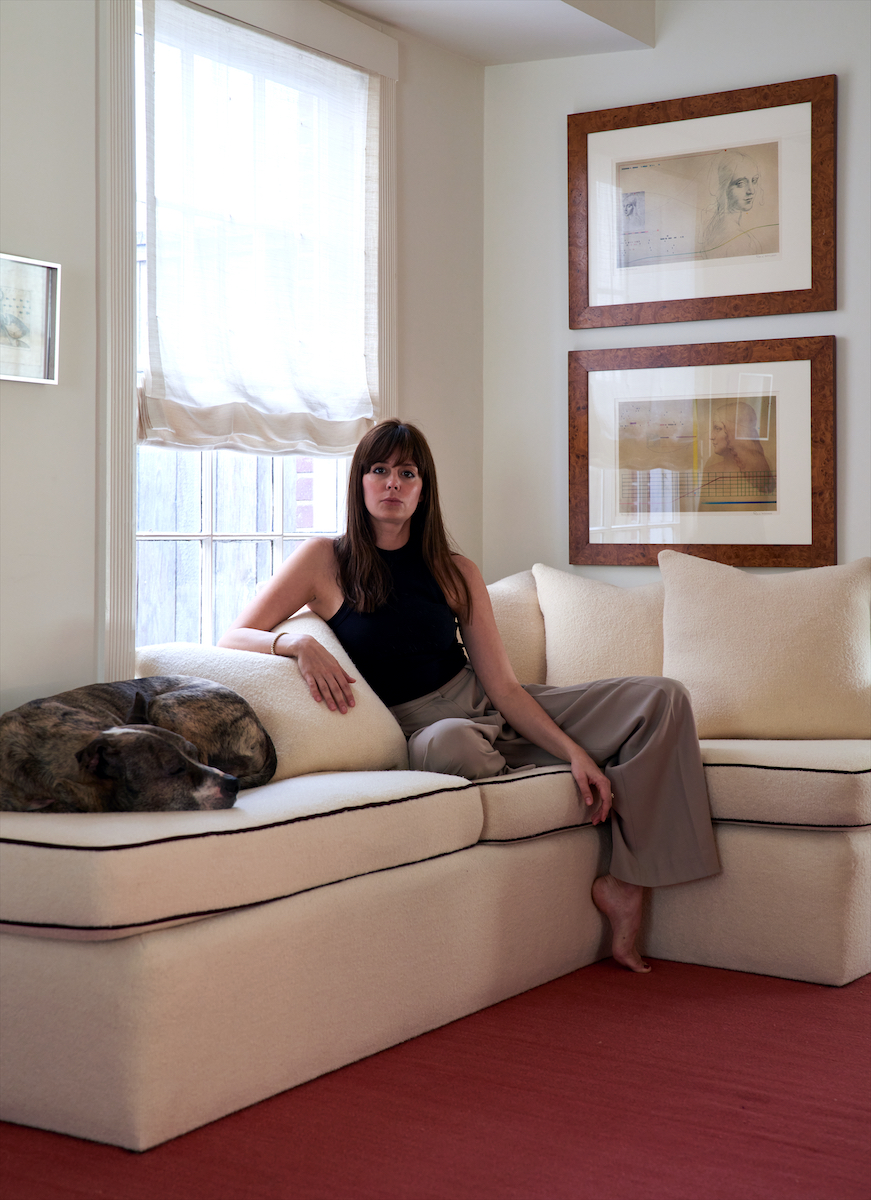
Crafting an Entertainer’s Flow
The biggest challenge was working with small rooms that were unusually configured. “I love to entertain, and the living room is really long and narrow, so I used every corner for seating. It’s an unconventional way to get as many people to hang out in the space as possible.”
To finish multiple seating areas with a bit of polish, Persia brought in a handful of standout furnishings, including a 1970s modular white leather sofa designed by Ubald Klug for De Sede, which she purchased from a friend. The cats have not discovered it yet — but just in case, she had it reupholstered in a high-performance leather by Holly Hunt, the kind used on private aircraft.
Next to the fireplace is an unusual Memphis chair that performs double duty as a table and holds a metal lamp by Ron Rezek, which she brought from her childhood bedroom. “Memphis is definitely out there so a drop of it in a room is all that’s needed,” she says. The matching white oak butcher-block coffee table and chest are her own designs.
“There was already enough going on in the room with different materials, and I didn’t want the pieces to be distracting; matching them was the best way to solve the puzzle,” she says. A large mirror on the wall keeps a seating area tucked into one corner of the living room from feeling claustrophobic. “It’s just a piece of cut glass — no frame, nothing special,” she says. “Some things in a room just need to be functional and disappear.”
What the mirror reflects is special, however: a rare 1970s travertine pedestal table from W. Gardner Antiques and a prototype wood chair designed by Philippe Starck in the 1980s, a part of a larger suite of chairs that belonged to her father.
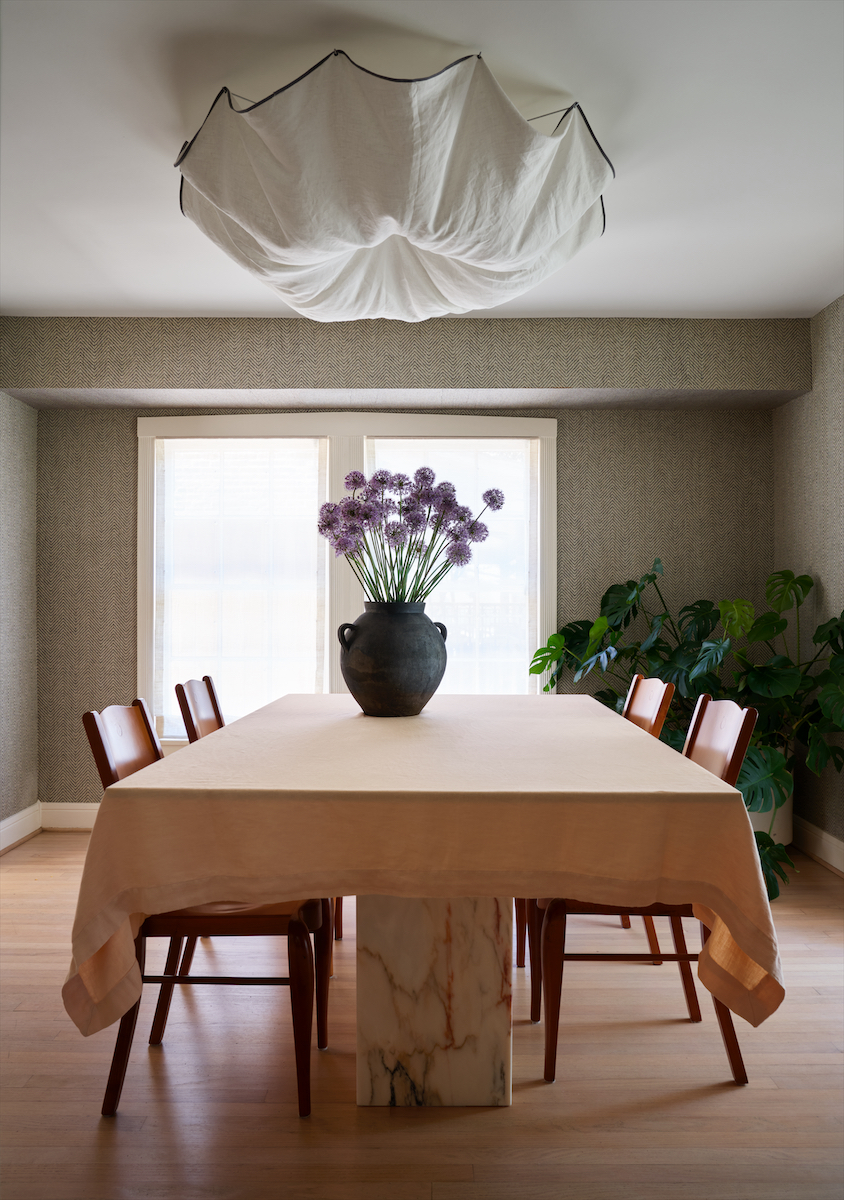
Uncommon Inspiration and ’90s New York City
An ad for nail polish on her Instagram feed inspired the uncommon burnt-pink color for the living room’s custom rug. “I was working on the living room, and when I saw it, I said, ‘Oh my god, the color is so weird and perfect. This has to be the rug color,’” she recalls. She took a screenshot and brought it to Sanaa Sahi at Carol Piper Rugs, who matched the hue exactly.
The dining room is handsomely cocooned in black-and-cream herringbone grasscloth by Phillip Jeffries that reminds Persia of a cool ’90s-era New York City apartment. “It creates a mood that feels nostalgic,” she says. She designed the dining table and console from black and cream marble streaked with orange and red; the chairs are part of the previously mentioned prototypes designed by Philippe Starck — a line her father’s store carried — which she retrieved from her childhood home.
The linen light fixture, designed by Italian designer Tobia Scarpa for Flos in the 1980s, was a labor of love. “I was dying to get one but they are so hard to find,” Persia recalls. “I’d get on the Internet for hours and I finally found one at a tiny shop in The Netherlands.” The light’s soft halogen glow adds to the room’s intimate feel.
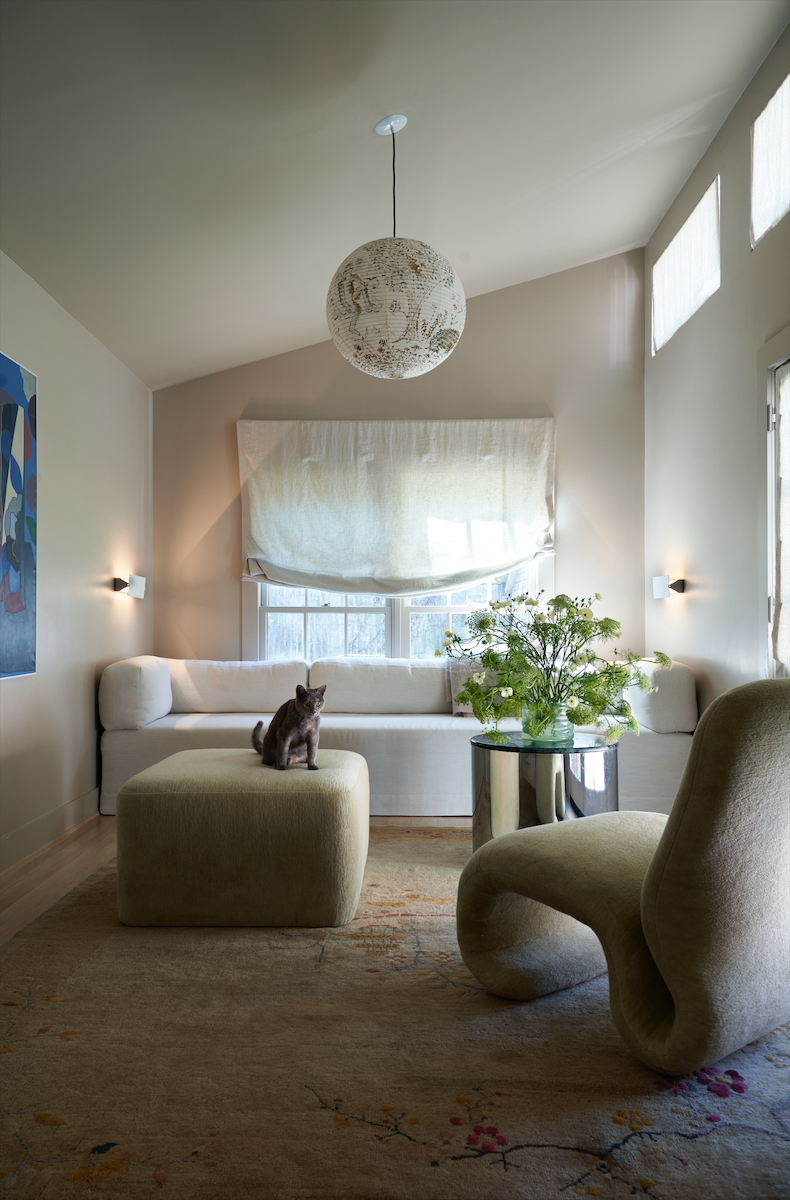
Olivia Persia. 1960s Pierre Paulin Ribbon chair in Pierre Frey fabric. Noguchi lantern painted by artist Jaime Herrera. Art Deco Chinese carpet from Carol Piper Rugs. Chrome 1960s table from Reeves Art + Design. (Photo by Pär Bengtsson)
The cozy TV room’s long, narrow layout allows for seating at one end with a flatscreen on the opposite wall. It’s one of the family’s favorite hangouts. She designed the sofa to run the width of the room and added a custom ottoman to go with the vintage ’60s Pierre Paulin Ribbon chair, both upholstered in greenish Pierre Frey fabric. Houston artist Jaime Herrera painted a custom design on the Noguchi lantern that features trees and frogs, and an antique Art Deco Chinese rug is on the floor.
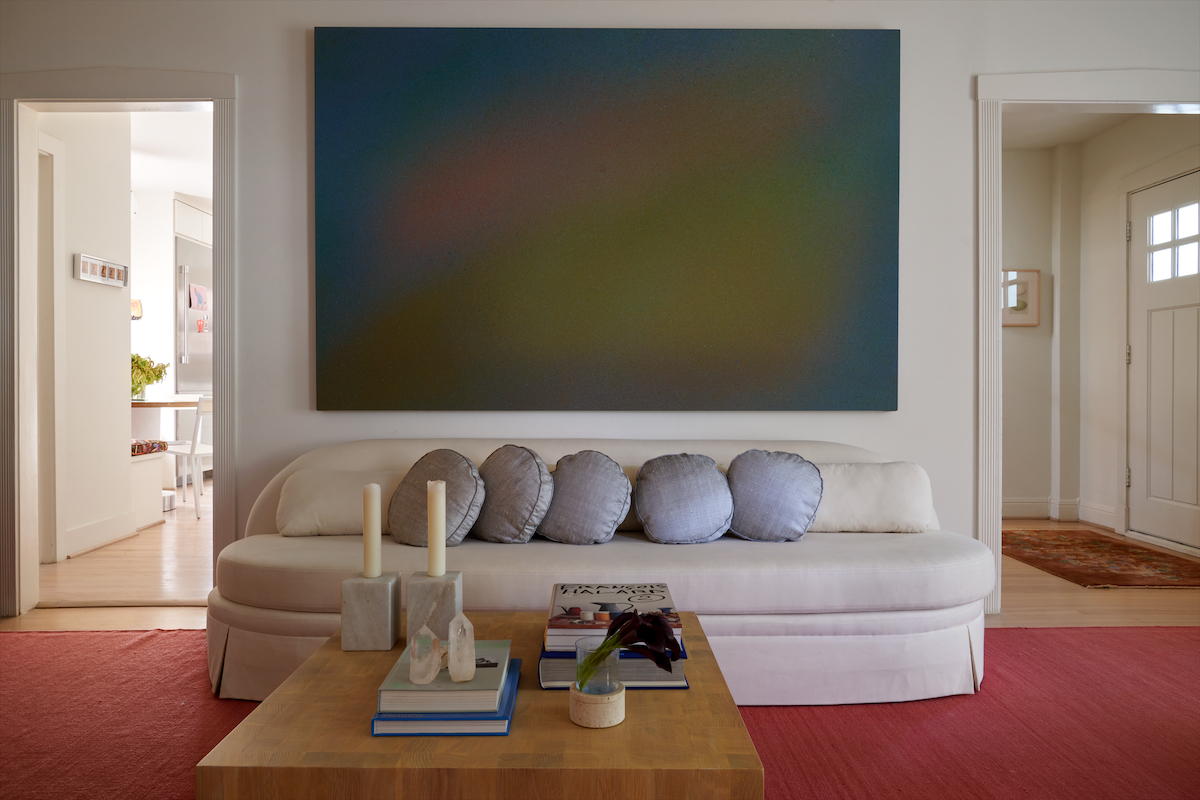
A Worldly Houston Art Collection
Persia loves art — she was an art history major at Ole Miss — and often works with her close friend and art advisor Illa Gaunt, who relocated to Houston from London in 2012.
“She’s let me tag along to Art Basel for the past two years. We look for things together, and if I see something I like and get her approval, I know it’s a good purchase,” she says.
One of the contemporary works Persia has collected is a large atmospheric painting by Mexico City artist Ana Montiel, which hangs over the sofa in the living room. Her latest purchase, a surrealist shell painting by L.A.-based artist Kristy Luck hangs next to the fireplace. The painting’s swirls are textural, just like the wavy glass sconces by Ron Rezek flanking the windows and the stacked layers of the De Sede sofa.
“I like the way older European spaces don’t feel decorated or perfect,” she says. Still, everything is carefully considered. “I absolutely love everything I have — nothing is filler. I have to be obsessed with it, or I don’t bring it home.”


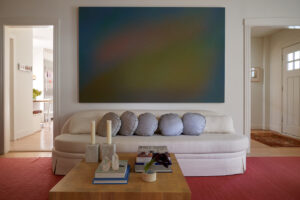


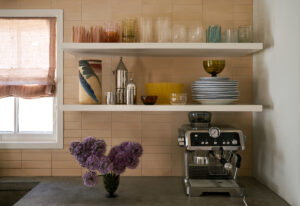





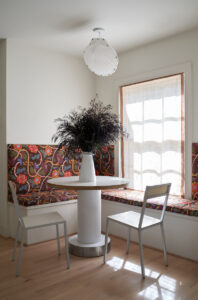

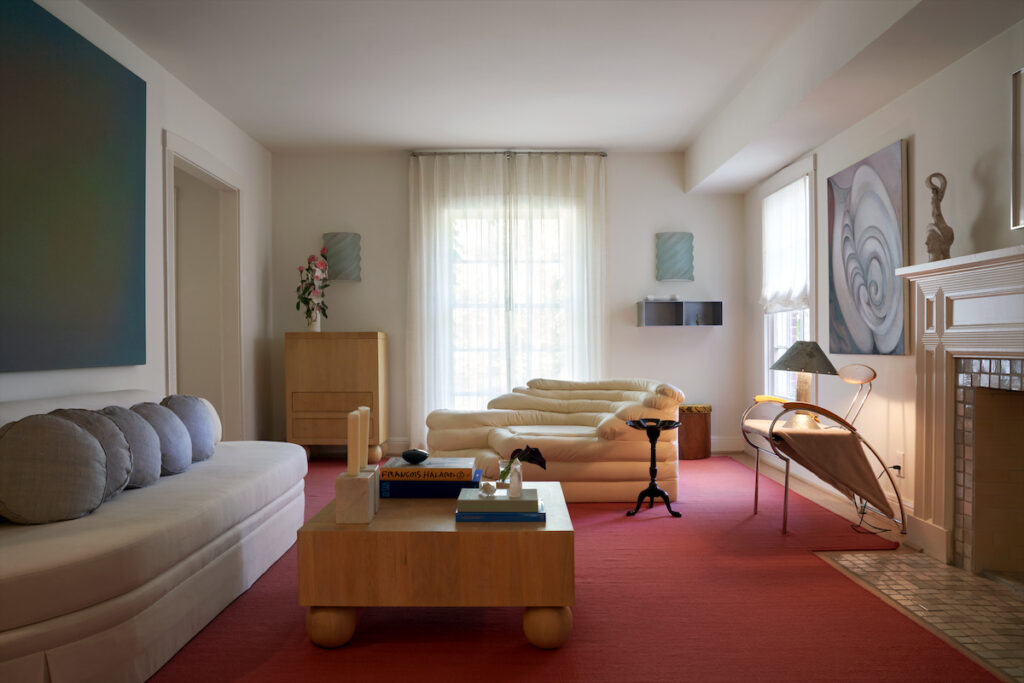

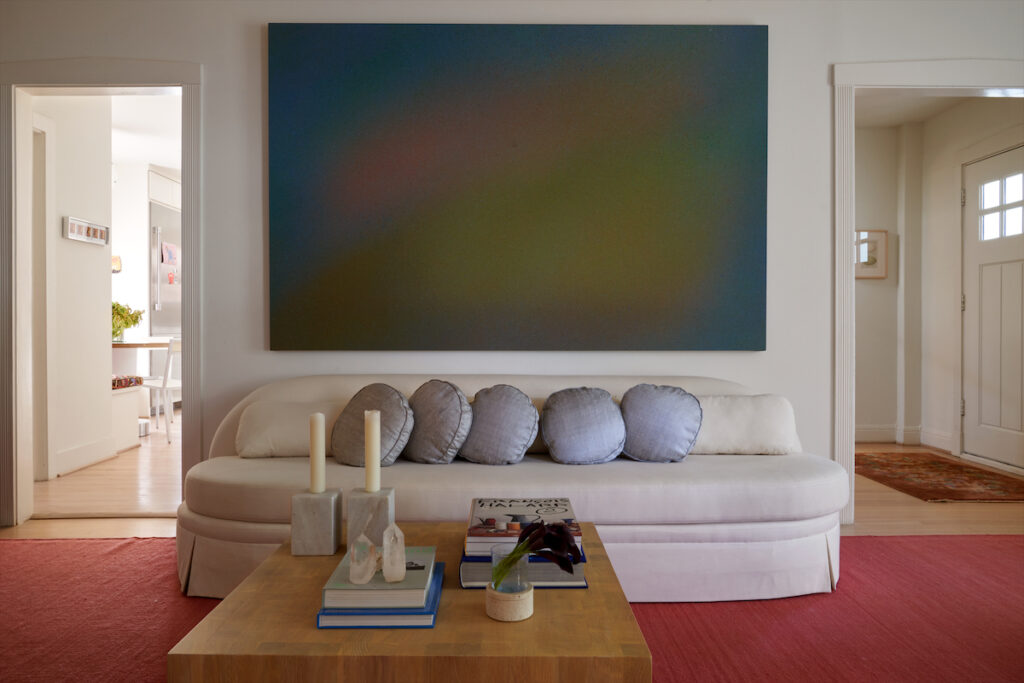

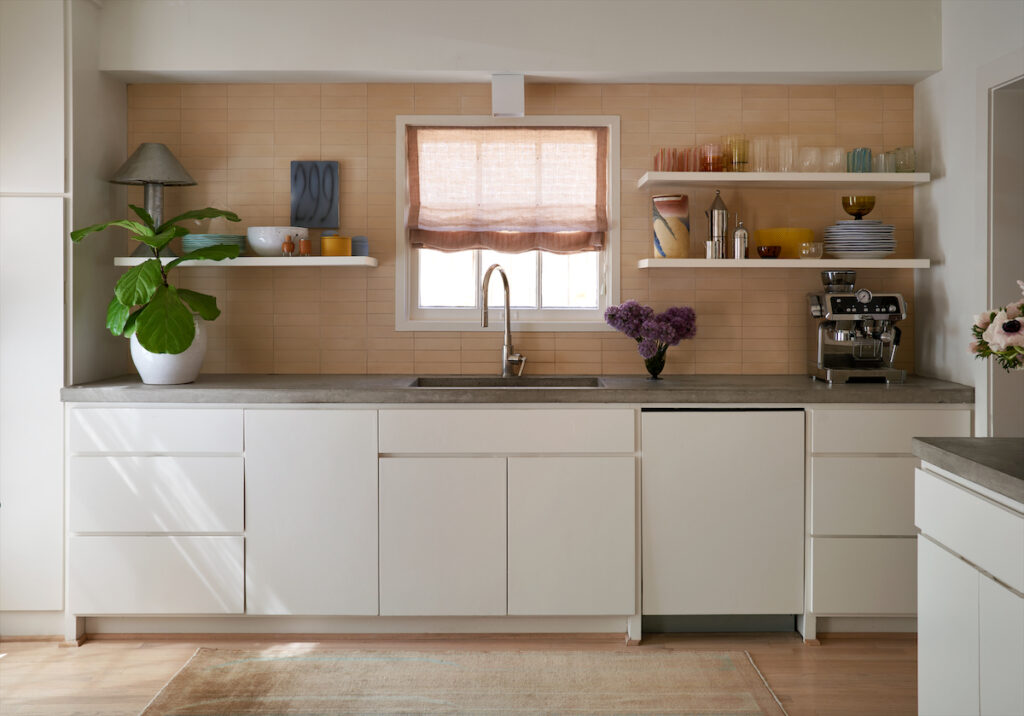



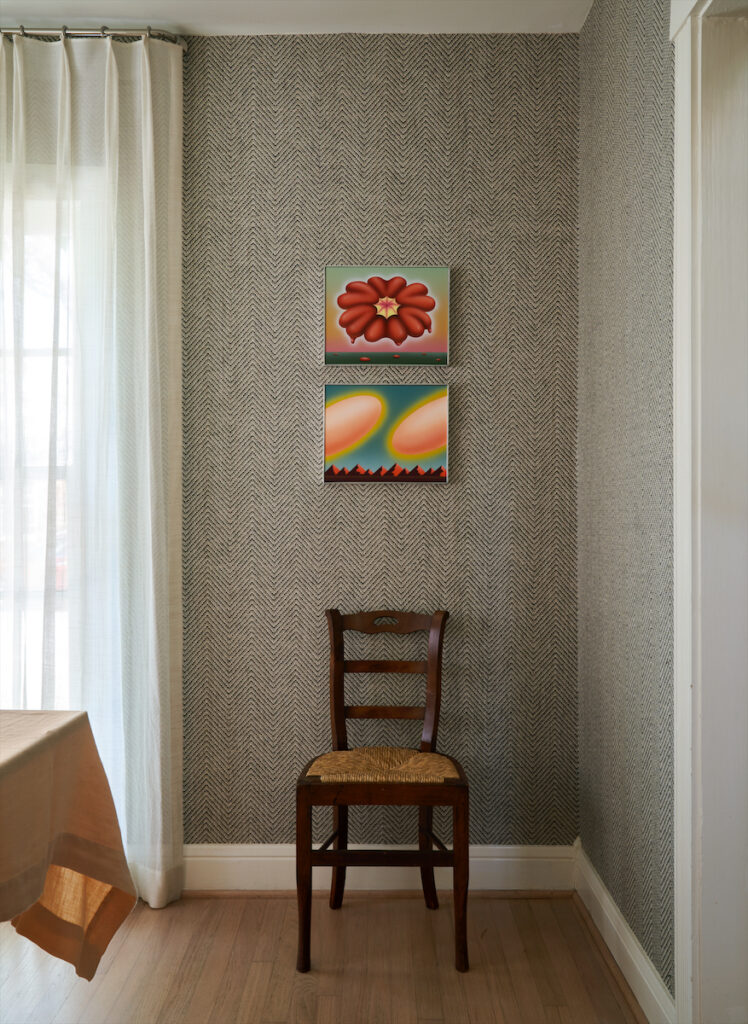

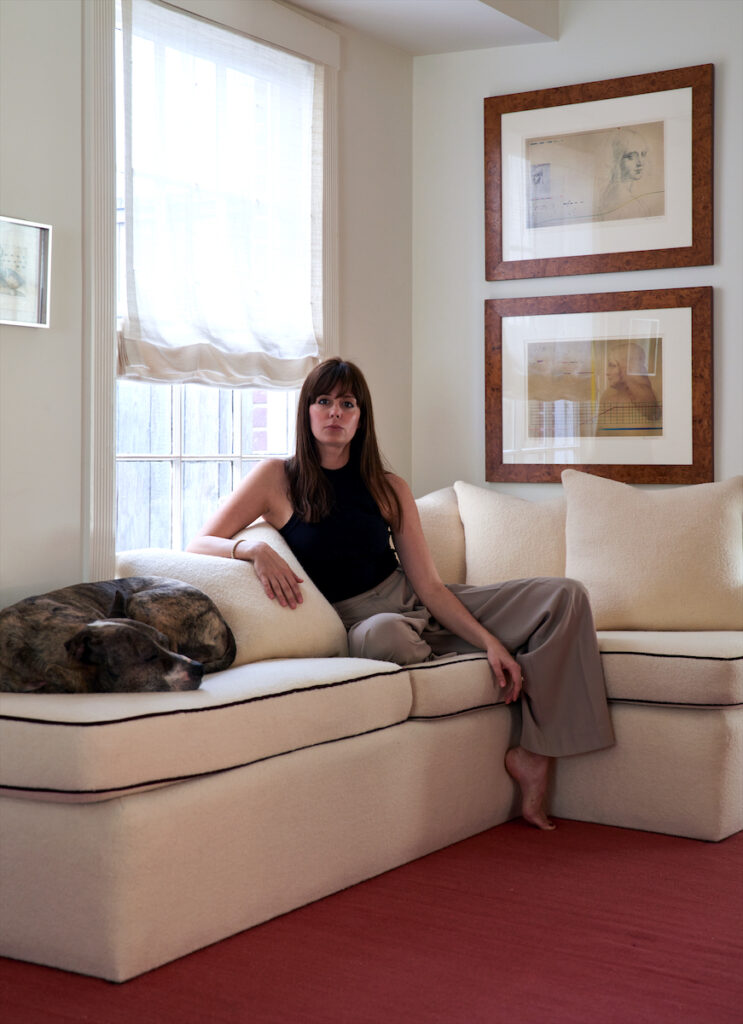




_md.jpeg)













_md.jpeg)



_md.jpeg)

